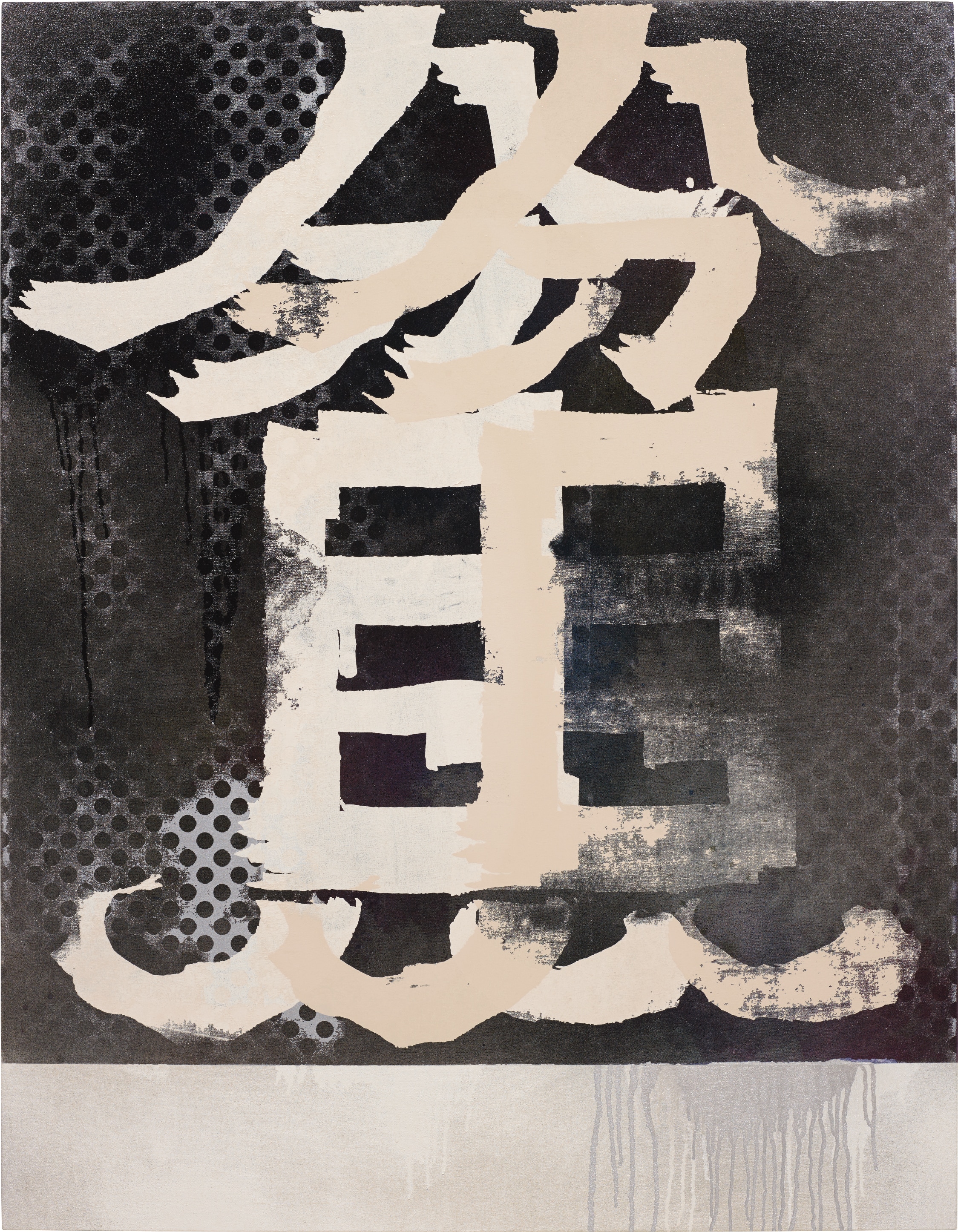

152
Takashi Murakami
Means Exceeded
Full-Cataloguing
Incorporating the iconology of Japanese visual culture to communicate with a Western audience, Takashi Murakami examines the relationship of East versus West. In Means Exceeded, we see Murakami further exploring the idea of cultural exchange through his use of kanji as the centerpiece of the composition, floating atop a grey backdrop rendered in Benday dot that recall the visual language of the commercial printing process. The origins of kanji in Japan date back to the Asuka (552 - 646 C.E.) and Nara (646 - 794 C.E.) periods when the Chinese first introduced calligraphy to Japan. Almost all of the characters used in Japan have 3,000 years of Chinese history behind them. While in the West calligraphy is commonly associated with penmanship, in the East it has attained the status of art. The composition of calligraphy is tied to its meaning; the balance of the ink and white space of the paper as well as the movement of the brushstroke play an important part to how the work is interpreted. Rhythm is an important component in calligraphy; just as a musician plays a score, the calligrapher marks his paper without hesitation unable to go back and retouch the work. The kanji character in Means Exceeded is a stylized rendering of the word "poor." The character is shadowed and smeared, musing on the link between calligraphy and abstraction, and the hand of the artist with that of mass production. Here the kanji becomes an icon, stripped from its native use and inserted into the global marketplace as a symbolic exchange of idea and art.
Takashi Murakami
Japanese | 1962Takashi Murakami is best known for his contemporary combination of fine art and pop culture. He uses recognizable iconography like Mickey Mouse and cartoonish flowers and infuses it with Japanese culture. The result is a boldly colorful body of work that takes the shape of paintings, sculptures and animations.
In the 1990s, Murakami founded the Superflat movement in an attempt to expose the "shallow emptiness of Japanese consumer culture." The artist plays on the familiar aesthetic of mangas, Japanese-language comics, to render works that appear democratic and accessible, all the while denouncing the universality and unspecificity of consumer goods. True to form, Murakami has done collaborations with numerous brands and celebrities including Kanye West, Louis Vuitton, Pharrell Williams and Google.